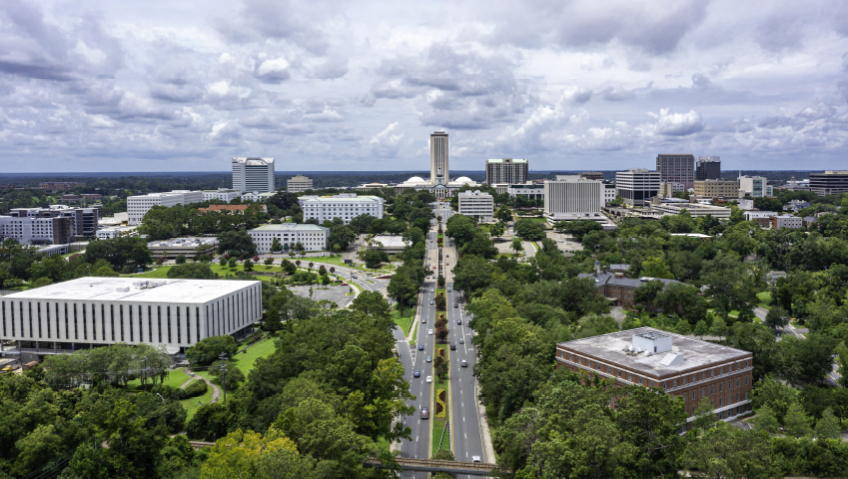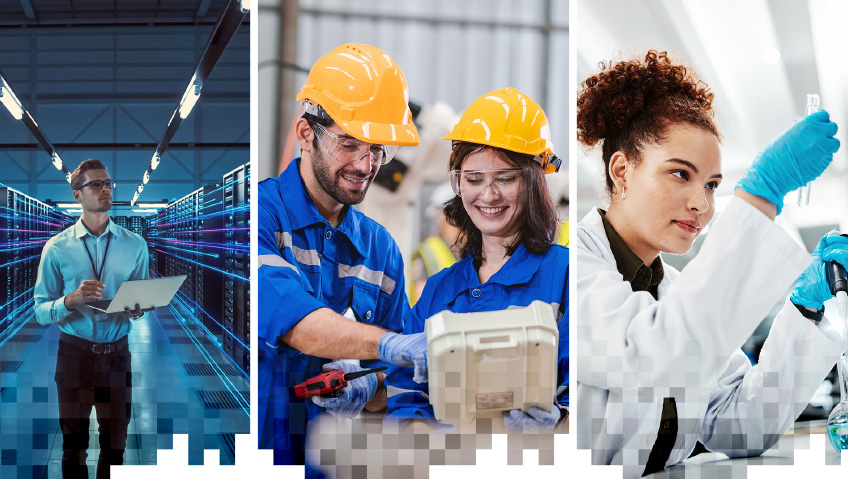Once, supply chain management was primarily about logistics—delivering raw materials to manufacturers and processers and finished products to retailers, and doing it on time and cost-effectively. While those are still critical factors, industries around the world from manufacturing and construction to hospitality and retail now face pressure from governments, shareholders, and consumers to ensure end products support environmental and societal values and are as sustainable as possible.
Whether we are talking to company presidents and CEOs, or community economic development directors, we are finding that people are prepared to talk about corporate responsibility and how what they are doing meets environmental, social, and governance (ESG) principles, with a view to reaching a 50 percent reduction in greenhouse gas (GHG) emissions by 2030 and net zero carbon by 2050. No matter how industries differ, we’ve noticed a common thread around questions of sustainability.
Here are just a few examples: in this issue of Business in Focus we learned from Mayor Nieves Riedel and Economic Development officer Armando Esparza that the City of San Luis, Arizona can ensure an unlimited supply of solar energy for manufacturers who choose to locate in one of its industrial parks, where there are 365 days of sunshine. This will allow manufacturers to bypass the use of direct energy derived from fossil fuel combustion or electricity purchased from the grid, meaning that when their products enter the supply chain, they will not have contributed to GHG emissions.
But those products have yet to reach the market and no matter how good the intentions of the original manufacturer were, those cleanly produced products may still be indirectly responsible for GHG emissions because they must be transported.
For another article in this issue, we spoke with Andrew Mutch, President of Michelin North America (Canada) Ltd., who explained that a significant portion of the CO₂ emissions that create global warming come from commercial long-haul trucks and trailers, an essential component of the supply chain that moves goods across the continent.
Through its GreenerFleets business, Michelin has partnered with the Canadian government’s Green Freight Program, acting as a consultant to 93 fleets across the country, helping them access an incentivizing program which will help them optimize the energy efficiency of their entire fleet to reduce GHG emissions.
It’s a multi-faceted approach involving retrofitting vehicles with lower rolling resistance tires and improved aerodynamics on trailers which result in lowered diesel consumption and therefore lower GHG emissions. According to Mutch, this will result in an estimated saving of 159,000 tons of CO₂ over the next four years.
It is heartening to learn about the actions manufacturing industries such as Michelin and communities such as San Luis are taking, which will have huge ripple effects on the sustainability of the global supply chain. We’ve also learned that both U.S. and Canadian governments have developed procurement policies requiring, for example, that materials for newly constructed federal buildings be in compliance with ESG principles.
Understanding the problems
But for the end user, whether it be the construction company fulfilling a government contract, or the retailer who wants to balance price point with sustainability, sourcing products in the global marketplace is an incredibly complex task, because there are hundreds, if not thousands of products, wending their way through the supply chain.
In addition, there’s uncertainty around the question of whether each participant in the supply chain shares the same goals toward meeting ESG principles.
Principles of sustainability apply not only to the product itself which may have been manufactured or grown with the best intentions, using renewable energy sources, but to how its raw materials and its various components were sourced, how it was assembled, processed, packaged, and transported, along with its ability to be re-used or re-cycled.
To understand the actual sustainability of the product, scientists and analysts concerned about global warming and climate change follow the entire life cycle of the product, consider the variables, and calculate the total of GHG emissions, referred to as Scope 3 emissions.
Furthermore, in the case of offshore manufacturing and imported products, there’s additional factors surrounding labor laws and exploitation of workers. This presents huge issues within the garment industry, with most of the cut and sew factories located in south-east Asia, where working conditions are often dire and inspection difficult.
Ensuring that each product brought to market is indeed compliant with ESG principles, with government procurement regulations, and with shareholder and consumer expectations, is not only complex, but overwhelming for most end users. Because of the sheer amount of data and information that’s involved, individual businesses simply don’t have the personnel, the time, or the advanced technology needed to research, analyze, and fully comprehend all that’s involved in maintaining supply chain sustainability.
Finding the solutions
A brief survey of “what’s out there” to help deal with supply chain sustainability reveals that an entire solutions-based industry, using the most advanced technology and artificial intelligence, has grown up around these issues.
How do these programs work? We looked at the Strategic Risk Sensing solution offered by Deloitte, a leader in the field, that was engineered specifically to detect ecosystem risk at scale, able to gather intelligence quickly, and offers the tagline, “focusing on their targets can help you hit yours.”
If, for example, a business wanted to focus on a subset of indirect suppliers, such as utilities, or legal firms and shared its criteria, then Deloitte could build a framework to see if those third-party companies’ values aligned with its own. Or if the company had set science-based targets, Deloitte could ascertain if the supplier was part of the Carbon Disclosure Project or the RE100 initiative. And through cloud-based analytics it can go well past binary questions of whether or not a supplier has specific environmental goals, and go deeper to determine the type of goals, and if they are quantifiable.
According to its website, Deloitte’s powerful software program can pull information from over a million data sources, and once the sensing engine has pulled the data into the sensing platform, Deloitte’s human analysts evaluate the intelligence and share recommendations as to how the client can adjust its supplier network to be in line with its ESG goals.
Another program we looked at in our survey is one offered by TradeBeyond (formerly CBX Software, an international company headquartered in Hong Kong). In the beginning, according to its website, TradeBeyond functioned as an extended supply chain management provider for private label and branded merchandise.
In 2023 the company took a giant step forward in providing sustainable supply chain management when it acquired Pivot 88’s platform which provides a complete cradle to grave view of products for brands and retailers to meet ESG goals through supply chain mapping. Its platform offers a visual look at all the interrelationships, showing the entire chain of custody from early-stage raw material to production to delivery, and is especially applicable to retailers whose offerings include apparel and footwear.
The supply chain for the garment industry is complex and frequently problematic, with most of the fabrics made in Asia, and assembly done all over the world and has a big impact on ESG goals, according to Rejean Prevost, spokesperson for the company.
Cotton goes from a farm to a gin, to a spinner, a weaver, and a dyer, before being turned into a garment, and the industry which includes designers, merchandisers, and buyers, have all been working in silos, no one talking to each other.
What TradeBeyond does, according to Prevost, is allow growers, processers, and manufacturers “to embed their documentation in a digital format so that customs agents have full chain of custody information. It also helps retailers get their third partner inspection firms audited which will allow them to make better data driven decisions and have supportive documentation for their claims.”
We also looked at non-profit organizations such as the Sustainable Supply Chain Alliance (SSCA), headquartered in Kansas City, MO, and formed in 2008 by several electric utility supply chain executives who recognized the potential benefits of working together to help the industry become “more green.” Today the organization has grown to over 100 utilities members and suppliers, and includes leading providers such as NY Power Authority, BC Power, and Edison.
Clearly, stopping or even reversing a century or more of damage to our planet through climate change and global warming caused by GHG emissions multiplying throughout the supply chain is not an easy task.
But with a collaborative effort, industry and government leaders dedicated to the task of developing a sustainable supply chain, assisted by powerful AI software, and educated consumers who refuse to purchase items retailers can’t prove were produced sustainably, or are overpackaged, a carbon net zero future may become a reality. And perhaps, after that’s achieved, we may even begin to reverse the damage we have caused our planet.






